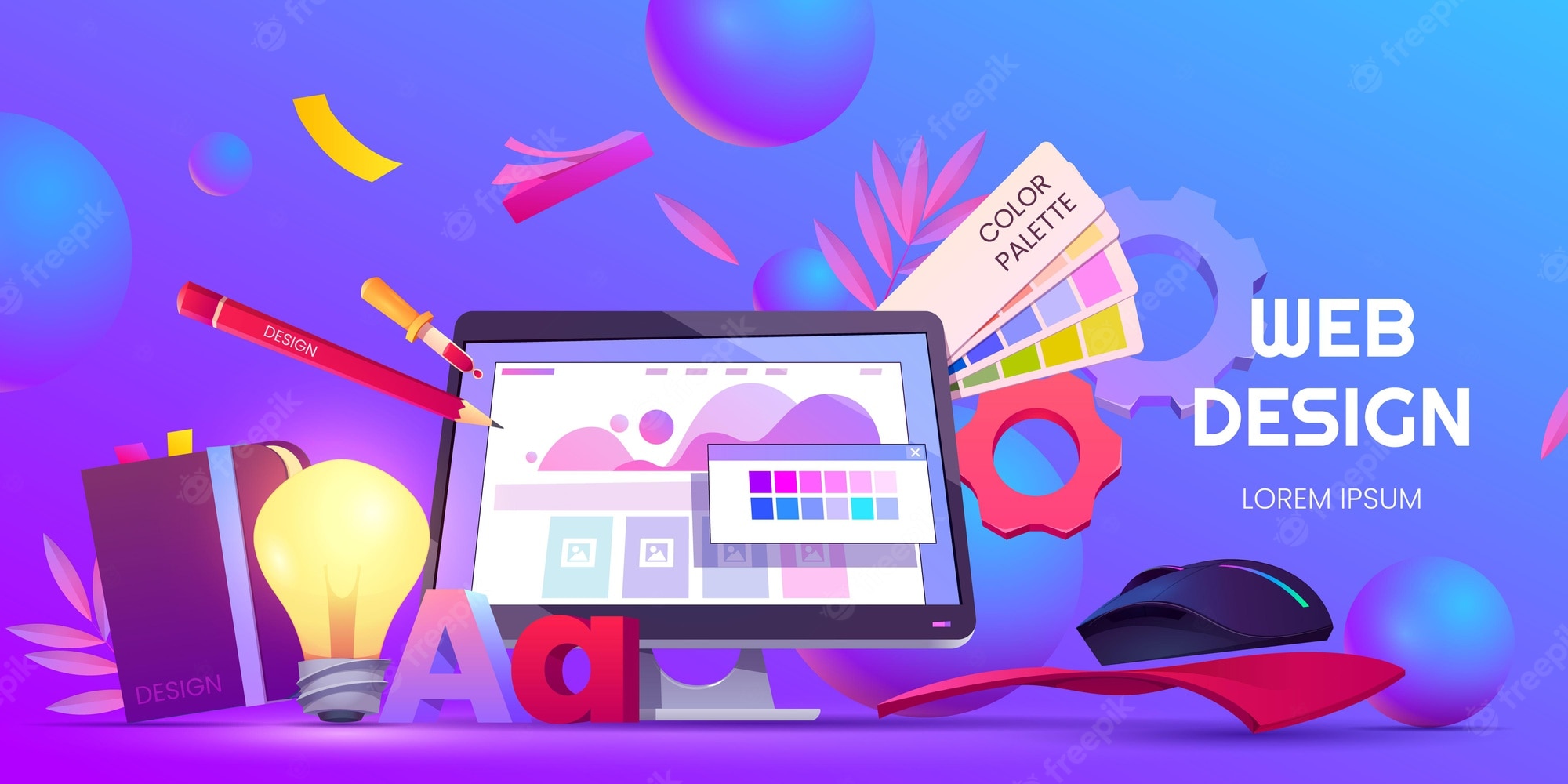The Significance of User Experience in Efficient Web Design Techniques
User experience (UX) works as a foundation in reliable web design strategies. It shapes just how individuals interact with a site, affecting their contentment and possibility of returning. A properly designed UX can boost interaction through user-friendly navigation and responsive formats. Forgeting these aspects might lead to frustration and increased bounce rates. Recognizing the intricacies of UX is important for developers aiming to create engaging electronic experiences that resonate with varied audiences. What factors truly drive successful user engagement?
Comprehending User Experience and Its Influence On Style
Although user experience (UX) is typically perceived as a plain aspect of web design, it basically forms how users communicate with a website. UX encompasses all facets of the user's interaction, consisting of usability, availability, and total contentment. A positive UX cultivates involvement, motivating customers to discover the website and return in the future. Conversely, an unfavorable experience can lead to frustration, causing high bounce rates and shed opportunities for conversion.
Layout components like material, design, and navigation company play essential functions fit this experience. Efficient UX style prepares for user requirements and choices, making certain that info is visually appealing and quickly obtainable. Furthermore, comprehending user actions with analytics can offer beneficial insights, informing style choices that improve usability. Inevitably, a detailed understanding of UX permits developers to create internet sites that not only attract individuals yet additionally advertise significant interactions that line up with business goals and user expectations.
Secret Principles of Effective User Experience
Reliable user experience pivots on a number of key principles that boost site performance and engagement. User-friendly navigating design, receptive format fundamentals, and the relevance of aesthetic power structure are essential elements that add to a smooth communication between individuals and internet content. Recognizing these concepts allows designers to produce even more available and user-friendly electronic environments.
User-friendly Navigating Layout
User-friendly navigation style offers as a vital gateway to their overall experience when customers encounter a site. Effective navigating allows customers to effortlessly situate the details they seek, enhancing their communication with the website. Key principles consist of clear labeling, rational company, and regular positioning of navigating elements. Tags must be straightforward, allowing individuals to forecast the material they will certainly find. A well-structured power structure aids users recognize the connection between different sections, leading them via the website effortlessly. Furthermore, responsive food selections and conveniently accessible links add to a fluid experience across tools. By focusing on user-friendly navigating, developers can substantially decrease user irritation and boost engagement, ultimately promoting a favorable assumption of the website and its content.
Responsive Format Basics
A well-structured navigation system naturally results in the demand for a receptive layout, which is necessary in today's varied digital landscape. A responsive format guarantees that websites feature flawlessly throughout various tools, consisting of desktops, mobile phones, and tablet computers. This adaptability enhances user experience by permitting web content to be aesthetically coherent and easily accessible, regardless of display dimension. Trick principles of responsive design include liquid grids, flexible pictures, and media inquiries, which help with optimal viewing. In addition, prioritizing touch-friendly components enhances interaction on smart phones. By carrying out a receptive design, designers can suit individuals' needs, lessen bounce rates, and rise involvement. Ultimately, a well-executed receptive style cultivates a favorable user experience, encouraging visitors to check out the site even more.
Aesthetic Pecking Order Value
Visual pecking order plays a necessary duty in leading customers with a web site, making certain that important details records their interest. By tactically making use of dimension, spacing, color, and contrast, designers can develop a clear path for individuals to follow. Bigger elements usually draw the eye, suggesting their importance, while contrasting shades can highlight contact us to action. Additionally, constant positioning and collection of associated web content boost comprehension, making navigating instinctive. Reliable use visual hierarchy not just improves usability yet also supports the general aesthetic of the site, cultivating a positive user experience. When individuals can easily determine the most critical details, they are extra likely to engage with the content, causing raised satisfaction and interaction with the internet site.
The Role of Usability in Web Design
Use plays a vital function in web design, specifically through navigation simpleness and adherence to ease of access standards. Reliable navigation enhances user satisfaction by permitting visitors to discover information rapidly and without effort. On the other hand, conference access criteria ensures that all users, no matter of their abilities, can properly connect with the website.
Navigation Simplicity
Simplicity in navigating stands as a keystone of efficient web design, considerably affecting user experience. A streamlined navigation system allows individuals to discover info rapidly and with ease, lowering stress and enhancing complete satisfaction. Clear labeling and logical framework are essential components, assisting customers effortlessly through the website. Repetitive official site web links or excessively intricate food selections can confuse customers, resulting in raised bounce rates. Furthermore, mobile responsiveness needs to be thought about, making certain navigation stays uncomplicated throughout tools. Focusing on vital web pages and decreasing clutter additionally sustains user involvement. Efficient navigation not only promotes a positive experience yet additionally encourages individuals to check out the website better, eventually leading to greater conversion his explanation rates. Hereof, navigating simpleness functions as an essential consider the total effectiveness of web design techniques.
Availability Requirements
User involvement is significantly improved when internet sites adhere to accessibility standards, making certain that all customers, no matter of their abilities, can navigate and engage effectively. Conformity with these criteria not only widens the target market however additionally improves general user fulfillment. Accessible design includes attributes such as text options for pictures, keyboard navigation, and adequate shade comparison, which help with use by individuals with impairments. In addition, executing these standards can favorably influence search engine optimization (SEARCH ENGINE OPTIMIZATION) by improving website framework and clarity. As web design develops, focusing on access comes to be important in cultivating an inclusive electronic setting. By welcoming these criteria, designers contribute to an extra fair web, inevitably driving user commitment and involvement.
Value of Responsive Design for User Engagement
As customers progressively accessibility internet sites with a selection of tools, the importance of receptive design comes to be critical for involving customers efficiently. Responsive design warranties that an internet site adjusts effortlessly to different display dimensions, giving a perfect viewing experience no matter the gadget utilized. This flexibility boosts user interaction by helping with simpler navigation and interaction with content.
When users encounter a site that is receptive, they are more probable to stay much longer, discover additionally, and return in the future. A well-designed responsive design decreases the disappointment frequently related to zooming and scrolling on smaller screens, therefore minimizing bounce prices. Furthermore, receptive style can positively influence search engine positions, as internet search engine focus on mobile-friendly internet sites. In today's digital landscape, where mobile usage remains to climb, applying responsive layout is not just advantageous, yet important for keeping user involvement and assuring a favorable experience read this post here throughout all devices.
Enhancing Load Times for Better User Fulfillment

To boost load times, web designers should focus on maximizing photos, leveraging browser caching, and lessening HTTP requests. Furthermore, using Material Delivery Networks (CDNs) can quicken content distribution by dispersing it throughout different geographical places. Enhancing code, such as compressing CSS and JavaScript data, further contributes to quicker packing rates.
Eventually, a commitment to enhancing load times not only boosts user contentment yet additionally reinforces brand name loyalty and enhances the probability of repeat brows through. A swift, smooth experience is essential for keeping individuals and fostering positive communications.
The Impact of Visual Power Structure on User Interaction
Visual pecking order acts as an essential aspect in leading user communication on a website. By organizing web content in a manner that prioritizes info aesthetically, designers can influence just how customers involve and browse with a website. This hierarchy is established via numerous style strategies, consisting of dimension, spacing, shade, and comparison. Bigger typefaces or vibrant colors draw focus to critical aspects, such as phone calls to activity or headlines, while suppressed shades and smaller font styles can indicate secondary information.
Reliable aesthetic hierarchy helps individuals swiftly identify what is essential, decreasing cognitive tons and improving functionality. It permits intuitive navigating, making it simpler for customers to discover what they require without aggravation. As individuals communicate with a website, a well-structured visual power structure cultivates a more satisfying experience, ultimately leading to greater involvement and conversion prices. Designers should prioritize these concepts to develop an user-centered and effective internet environment.
Determining User Experience: Strategies and devices

Often Asked Inquiries
How Can I Improve My Website's User Experience on a Budget?
To enhance an internet site's user experience on a budget, one can optimize web page load speed, simplify navigation, apply receptive layout, enhance content clearness, and gather user comments for continual refinements, making sure a satisfying site visitor experience.
What Are Common User Experience Blunders to Stay Clear Of in Web Design?
Usual user experience blunders in web design consist of chaotic layouts, poor navigation, slow packing times, absence of mobile responsiveness, ignoring access, irregular branding, and falling short to prioritize user comments - Web Design services. Each can considerably hinder total website efficiency
Exactly how Commonly Should I Update My Site for Better User Experience?
Internet sites must be updated on a regular basis, ideally every few months, to keep ideal user experience. Regular updates assist address functionality issues, rejuvenate content, and adjust to altering user needs, making certain the website stays relevant and interesting.

Can User Experience Influence SEO Rankings on My Internet site?
User experience can considerably affect SEO rankings, as online search engine focus on internet sites that supply seamless navigation, quick loading times, and interesting content. A positive user experience can result in reduced bounce prices and higher search exposure.
What Duty Does Availability Play in User Experience Design?
Availability plays a crucial role in user experience style by guaranteeing that all individuals, despite capabilities, can navigate and engage with a web site effectively. This inclusivity enhances total fulfillment and involvement among diverse individuals.
User experience (UX) is commonly viewed as a simple facet of internet layout, it fundamentally forms exactly how users engage with a web site. User interaction is significantly boosted when sites stick to access standards, making sure that all users, no matter of their capacities, can browse and communicate properly. Determining user experience (UX) is essential for understanding exactly how properly a website satisfies the needs of its users. Furthermore, functionality testing, where actual customers browse the site while onlookers note troubles, supplies direct comments on user experience. Typical user experience blunders in web style consist of chaotic designs, bad navigating, sluggish loading times, absence of mobile responsiveness, overlooking availability, inconsistent branding, and stopping working to focus on user comments.